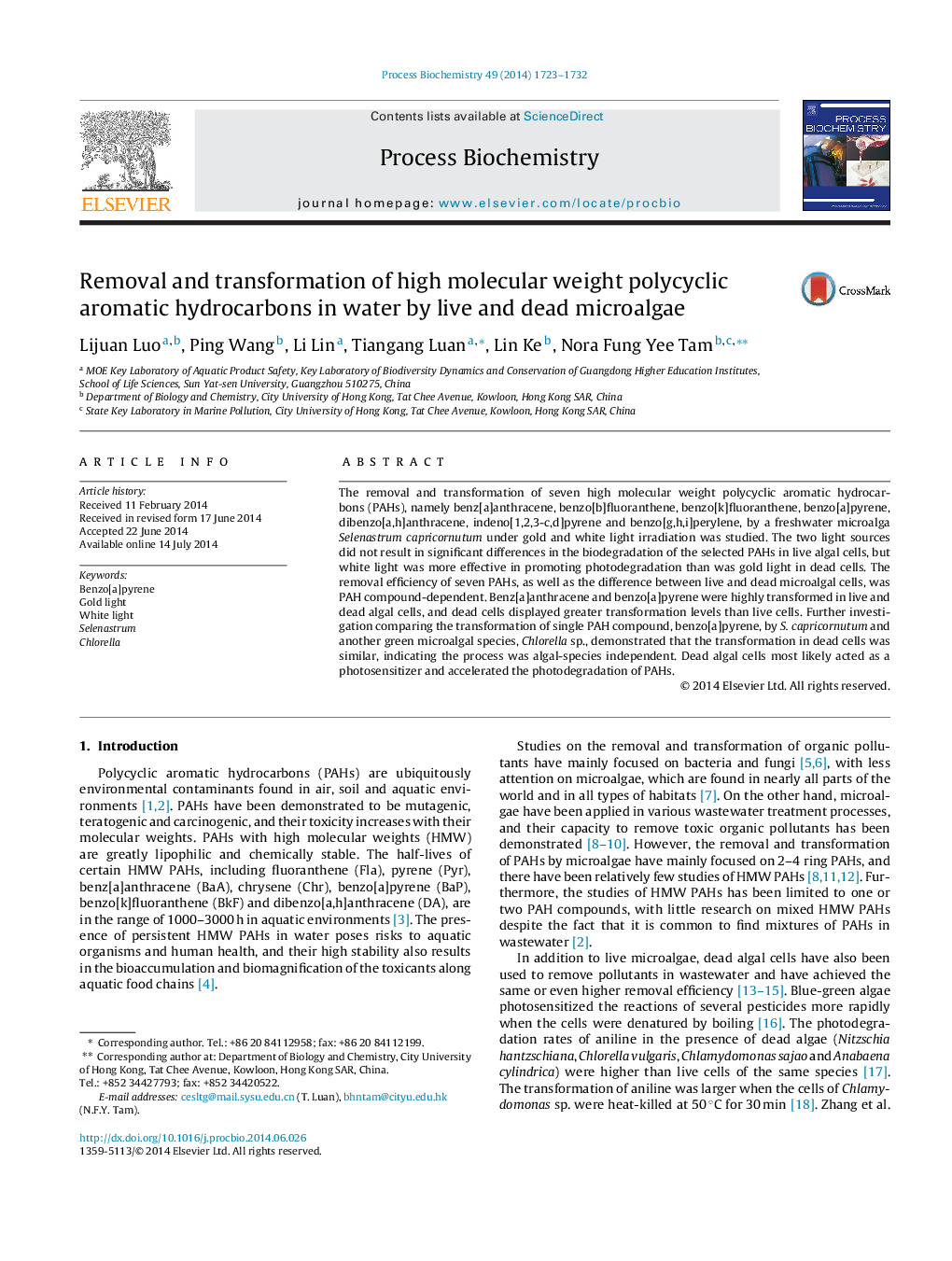| Article ID | Journal | Published Year | Pages | File Type |
|---|---|---|---|---|
| 34505 | Process Biochemistry | 2014 | 10 Pages |
•The transformation of high molecular weight PAHs with microalgae was studied.•BaA and BaP were highly transformed in both live and dead algal cells.•Dead cells showed higher transformation efficiency than live cells.•BaP transformation with dead algal cells was algal-species independent.•White light was more effective to transform PAHs in dead cells than gold light.
The removal and transformation of seven high molecular weight polycyclic aromatic hydrocarbons (PAHs), namely benz[a]anthracene, benzo[b]fluoranthene, benzo[k]fluoranthene, benzo[a]pyrene, dibenzo[a,h]anthracene, indeno[1,2,3-c,d]pyrene and benzo[g,h,i]perylene, by a freshwater microalga Selenastrum capricornutum under gold and white light irradiation was studied. The two light sources did not result in significant differences in the biodegradation of the selected PAHs in live algal cells, but white light was more effective in promoting photodegradation than was gold light in dead cells. The removal efficiency of seven PAHs, as well as the difference between live and dead microalgal cells, was PAH compound-dependent. Benz[a]anthracene and benzo[a]pyrene were highly transformed in live and dead algal cells, and dead cells displayed greater transformation levels than live cells. Further investigation comparing the transformation of single PAH compound, benzo[a]pyrene, by S. capricornutum and another green microalgal species, Chlorella sp., demonstrated that the transformation in dead cells was similar, indicating the process was algal-species independent. Dead algal cells most likely acted as a photosensitizer and accelerated the photodegradation of PAHs.
Graphical abstractFigure optionsDownload full-size imageDownload as PowerPoint slide
